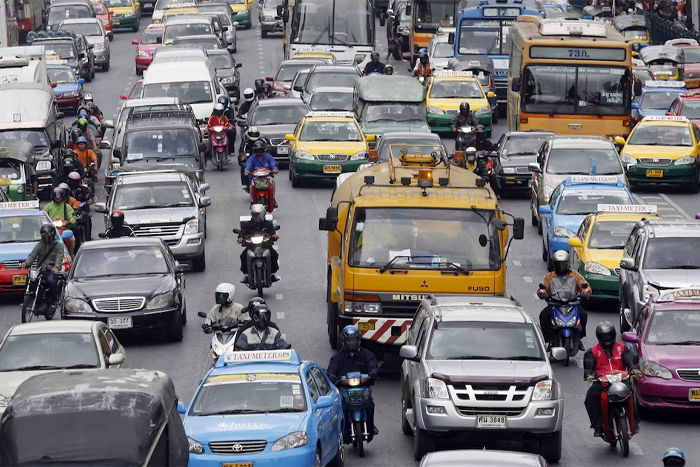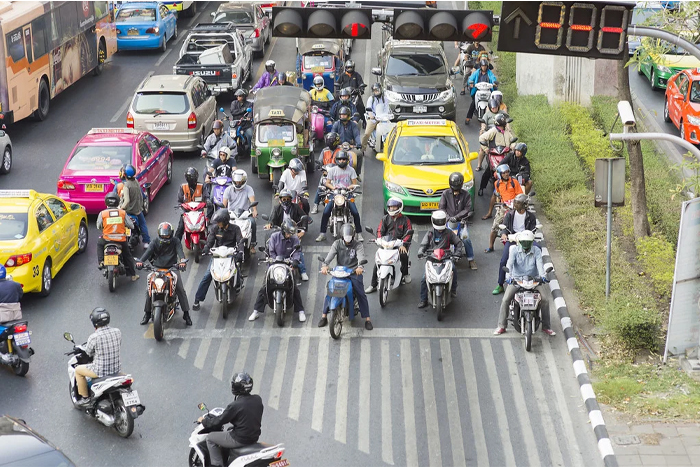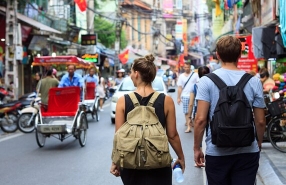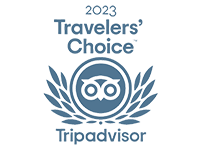How To Drive In Thailand ? Driving Guide For Foreigners

Table of Contents
I. Overview of traffic in Thailand

II. Traffic rules in Thailand

1. For two-wheelers
- Helmet is mandatory for both rider and passenger
Lights must be on at all times, even during the day
Prohibited from driving on highways
Maximum of two people per two-wheeler
Respect speed limits and traffic signs
2. For cars
- Drive on the left side of the road
Seatbelts are mandatory for all occupants
Prohibited from using a phone while driving without a hands-free kit
Maximum legal blood alcohol content: 0.5 g/l
Respect speed limits (generally 50 km/h in cities, 90 km/h on roads, 120 km/h on highways)
Horn use is regulated, often prohibited at night in cities
III. Driving requirements for foreigners in Thailand

1. Validity of international permits
- The IDP must be obtained in your country of residence before departing for Thailand. For example, in France, you need to apply at the prefecture or sub-prefecture of your place of residence, or in some cases, online through ANTS (National Agency for Secure Documents).
- To obtain an IDP, you will generally need the following documents:
- A form of identification
- Proof of address
- Two recent passport photos
- The completed application form
2. Process for obtaining a temporary Thai driver's license
Visit a Department of Land Transport office
Present required documents:
Undergo a basic medical examination
Complete a simple vision test
Pay the necessary fees
IV. How to safely rent a vehicle in Thailand
Choose a reputable rental agency, preferably international or recommended by reliable guidebooks.
Check online reviews and compare offers from several agencies.
Ensure you have all necessary documents: passport, valid driver's license (international or Thai), and a credit card for the deposit.
Carefully inspect the vehicle before departure and document any existing damage.
Thoroughly understand the terms of the included insurance and consider additional insurance if necessary.
For two-wheelers, pay particular attention to the condition of tires, brakes, and lights.
Make sure you fully understand the rental conditions, especially regarding mileage, fuel, and potential penalties.
V. Tips for safe driving in Thailand
Drive on the left: In Thailand, traffic flows on the left side of the road.
Have an international driver's license: Ensure you have a valid driver's license.
Know the traffic laws: Familiarize yourself with Thai traffic rules.
Stay alert in traffic: Traffic can be chaotic, especially in large cities.
Avoid driving at night: If possible, limit nighttime driving for safety.
Be aware of two-wheelers: Be conscious of the large number of motorcycles on the roads.
Don't drive under the influence: Drunk driving laws are very strict.
Check the vehicle before renting: If renting, carefully inspect the vehicle.
Have a map or GPS: Prepare a reliable means of navigation.
Respect local culture: Be patient and courteous in traffic.
> Kanchanaburi Travel Guide
> Travel insurance in Thailand
> Thailand Vietnam itinerary 3 weeks
> Thailand itinerary 2 weeks
- Contact the rental agency: Drive in Thailand, most car rental companies offer roadside assistance. In case of a breakdown, call your rental agency for help.
- Call emergency services: If you’re involved in a serious accident or need urgent assistance, you can dial 191 for police or 1669 for ambulance services.
- Towing services: If needed, the police or rental company will help you arrange towing.
Drive in Thailand, Technically, you need a motorcycle license to legally drive a motorcycle or scooter in Thailand. However, many tourists choose to rent motorcycles or scooters without having an official license.
Driving legally in Thailand, If you're caught driving without a motorcycle license, you may be fined. For safety reasons, it’s advisable to have experience riding a motorcycle and wear proper protective gear (especially a helmet, which is required by law).
How to drive in Thailand? In Thailand, when approaching a roundabout, vehicles already inside the roundabout have the right of way. This is similar to the rules in most countries that use roundabouts.
However, be aware that not all drivers may follow these rules strictly, and you may need to yield or slow down if necessary.
Related travel guide
Other similar articles
CUSTOMIZABLE BY LOCAL EXPERTS
Personalized trip at the original price!
REFUND GUARANTEE
We believe in our work and promise to give you money back.
GOOD PRICE / QUALITY
95% satisfied more than expected!
24/7 LOCAL SUPPORT
We are always available online to provide assistance at any time.
Most read articles
Autour Asia is highly recommended on
Embracing the mission of "Satisfied more than expected" and providing authentic experiences, we have received numerous recommendations on reputable travel forums:























